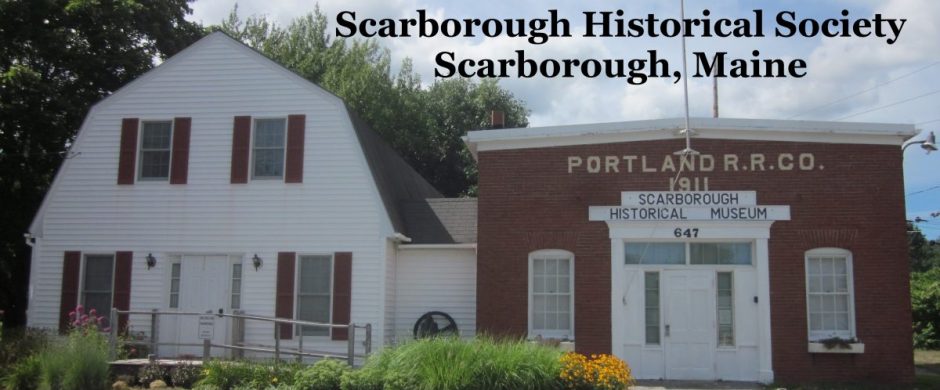The August 19, 1928, issue of the Portland, Maine, newspaper included an article, “Built in Revolutionary Days Old Kilbourn Home at Scarboro Stands Like Monument to Past.” The original was quite difficult to read, so Scarborough historian Rodney Laughton transcribed the article. The article refers to the house to the right of the Country Kitchen Restaurant, going towards Cape Elizabeth. Note: A few archaic words or terms are used and the original punctuation was left.
Transcribed by Rodney Laughton – November 6, 2018
Built In Revolutionary Days Old Kilbourn Home
At Scarboro Stands Like Monument To Past
_________________________________________
Site Was Original Land Owned By First Jordan To Come To America — Portland Part of Falmouth When Structure Was Erected — Good As Ever
_____________________________________
John Kilborn’s home stands in the ancient town of Scarborough on the west bank of the River Spurwink. It was built in 1782 by his father, Ivory Kilbourn. Hence it is three years older than the Wadsworth Longfellow House in Portland.
Ivory Kilborn, born in 1755 brought his bride, Hannah Pickard ( a kinswoman of the famous Whittier family of Haverhill), here the year the house was erected.
They came on horseback bringing vituals for the journey in saddle-bags. Their household goods came by small vessel and a bad storm coming on during the passage forced the skipper to put out to sea and remain there for several days so the distressed young couple believed their belongings to have gone to the bottom, but the craft out rode the gale and finally landed her cargo on the bank of the Spurwink, on Oakman’s Island, nearly in front of the house. Some of those articles of furniture are still in use in the family.
Grandfather John was the fifth child born in the house, in October 1800, which was eleven months after Washington died.
These people came from Rowley, Massachusetts where the family had lived since coming from Connecticut were they settled after leaving Wood Ditton, England in 1637.
America’s First Jordan
The land comprising the homestead in Scarborough was owned aforetime by Robert Jordan, the first Jordan to come to America. He was the first church of England clergyman to permanently settle here.
He was arrested and sent to jail in Boston for one year, for baptizing infants according to the established form. His baptismal bowl used in this atrocious act is now in the Maine Historical rooms. It was discovered several years ago, somewhere in Maine and a woman who was ignorant as to it sacredness was using it to feed her pig from.
When the house was built in 1782 Maine was part of Massachusetts and remained so until 1820. Portland was a part of Falmouth and four years later in 1786 Parson Smith of that town records in his diary: “Our Neck is set off and become a town, My Legs contunue to swell”
“Our Neck” was old Portland. (The parson was not particular as to punctuation and the news of the incorporation of Portland and the trouble in his legs appear much as one item.)
Three years after the building of the house, the first newspaper in Maine was started in Portland and was called “The Falmouth Gazette.”
Some Mud Holes
In the spring of that year, the mud was so deep that no mail came into Portland for five weeks.
In the days when this house was erected it cost but a mere trifle in money to build the average house. The chimney was first put up, as the oxen could bring the heavy rocks for the foundation to the sight where they were to be used when there was no house with which to bother.
The upper section was usually built of juniper poles and blue clay, the lower section containing the brick oven and fireplace of brick either brought from England or burned right on the premises.
Then the house was builded around the chimney, the timber for which was generally cut at home and the hewing of the frame done by some member of the family. Logs were hauled to the nearest sawmill for the boards while the men and boys split out by hand the shingles and clapboards, while every nail, spike, hinge and latch was made on the anvil of the handiest blacksmith. The neighbors came on a day appointed and raised the frame of the building.
The carpenters, then called joiners who made the doors, sash, and mantels charged the princely sum of “four and sixpence” (seventy-five cents) per day. It cost but little to live in those days and much less to die. Coffins, made by the jointers sold for three dollars and fifty cents. A bill for a burial at that period has been found where several dollars and a half covered every expense including the settling of the estate.
Brought Faithful Slave
When the family came to Scarborough they brought with them a faithful colored servant called Lettice. She lived to be nearly or quite one hundred years of age, dying early in the nineteenth century.
As one approaches this landmark of nearly a century and a half, he is first impressed by a huge elm tree of unusually artistic contour as to be almost spherical, which has stood at the end of the drive near the roadside for seventy-five years, a majestic sentinel as it were guarding the house in the background.
Paint Still Exists
The house you must know was never painted inside or out until nearly a century old. The rare old pumpkin pine vertical sheathing between some of the rooms is still undecorated by paint, having been scoured with sea-sand for one hundred and forty-six years. They present a surface as smooth as glass and rich creamy brown in color. Hand hewn beams form the ceilings showing every clip of the broad axe.
The house in those days contained no cloths closets, and when grandfather was asked by an old friend why such was the case he replied: “What need had they of closes presses. A woman had but one good gown, which she wore as a long as she lived and it usually served as her shroud as well,” “What did they want of cloths presses?” In many cases this wasn’t far from the truth.
The first Children
The first children born in the house which was late in the eighteenth century used to walk four miles to church, carrying their shoes in their hand in summer until nearing the meetinghouse.
Grandfather’s father beside being a farmer was also a cordwainer (which is the old name for shoemaker) and today may be seen suspended from a beam of the kitchen ceiling several shoe lasts carved with the initials of some members of the family.
He had a little shop in front of the house where he made shoes in Winter and in the Spring, would sling them onto his horse and cary them to Boston.
On one occasion he had sold his shoes and received his money for them, when he lost his wallet. He at once asked the town crier to cry it from the common and the finder came bringing it to him.
Made of Yarns
His purse was made on canvas of bright yarns and is still cherished by the present owner of the house, Mrs. Abby S. Huston, whose aunt named her for her intimate friend Abby Stephenson who was a cousin to the poet Longfellow.
Mrs. Huston, with her daughters Miss Sarah S. Huston and Miss Pauline Huston enjoys the beauties of this ideal spot during the summer and fall months and during the winter the family resides on Beacon Street. Mrs. Huston has also another daughter, Mrs. Henry Watson Usher (Henrietta Huston) of Pawtucket, R. I., and a son, Ervin C. Huston of this City.
Not far from the house on the ancestral acres, Grandfather, in ploughing once unearthed the skeletons of eleven persons killed in queen Anne’s war. Among the bones he also found an Indian tomahawk, which was later given to a grandson of the builder of the house, Major Ivory Kilbourn of the British Army, in New Brunswick. His sword is reverently placed over one of the fireframes in the house.
Only Twice Repaired
Only twice during the life of this historic home, has it received extensive repairs, once in 1835 and again in 1926, when it was strengthened. No alterations have been made in the interior.
Most interesting of all is the fact that this house has never been owned by any but a direct descendant of the builder and is still occupied and most thoroughly enjoyed by the family.
There are several descendants in the sixth generation now living and many beside the kindred, find pleasure in visiting the genial occupants and present owners of the place the Hustons of Woodfords and Scarborough. Here one finds hospitality in its true meaning, and their many friends esteem it a pleasure and privilege to chat with them by the warmth and glow of their, fireside, nestled among their treasures of the long ago.

